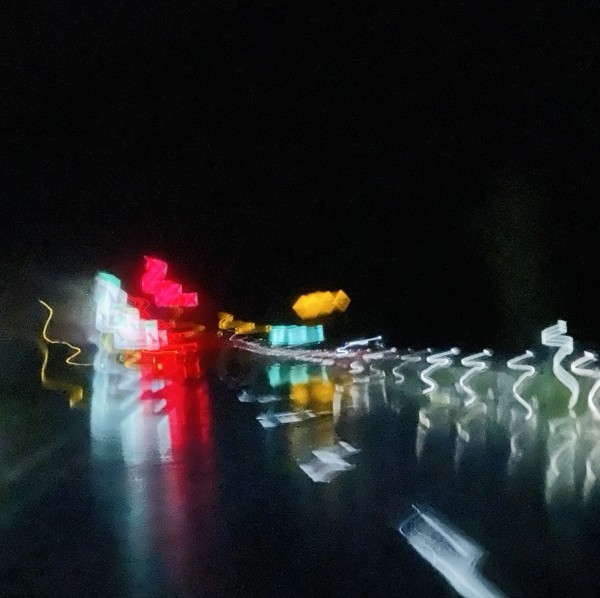02024-04-23 | Jon Gagan, Music, Recording, Santa Fe
Jon released a new album and I am loving it. For years I have been telling everyone willing to listen (Ha! that probably means you can find it on this blog somewhere) that the best thing that could possibly come out of this era of musicians getting squeezed by Silicon Valley would be that they make the music they want to make… because when it’s not likely that we can make money, we might as well make something that we want to hear… without considering what an audience might want or how to promote a song for radio etc.etc…
This album is 100% Jon Gagan. He even took the photo himself! You absolutely do not have to be a bass player or bass aficionado to enjoy these pieces! Play these tracks and read what he wrote about the recording. I think you will agree, it absolutely lovely.
Still. Life. is a collection of sketches that were done on electric bass between 2020 and 2024.
With each piece, I began by simply recording whatever came to me in the moment. I would then overdub another bass part or two and in some cases add Rhodes or percussion, often using the bass as a percussion instrument or source of a sound effect.
During the shutdown in 2020, my daily rhythm became one of waking up at 2:00 or 3:00 in the morning and playing bass in the studio until the sun came up. I kept something of this habit in subsequent years, and Still. Life. was recorded during this time of day.
With the work having been done in the pre dawn hours it didn’t surprise me when I noticed a certain calm quality emerge as a theme from piece to piece. Without planning it, I realized I had been able to express the feeling of unhurriedness that was emblematic of the pause in the rush of modern life for me.

02023-10-28 | Recording, Studio
Bob Katz Interview, Part 1 – Weiss Engineering – Pro Audio & High-End Hi-Fi
But I talked to Eric about his incredible cutting system and asked him, “If the very best that vinyl can do is to duplicate the original master, what’s the point of vinyl?” He had an answer to that. He said — “You know, vinyl customers are the ones that we seek. Because they pay attention to the artist’s music. They spend time in their living rooms, carefully put the record on, and listen from beginning to end. They don’t skip around like so many of us do when we listen to streaming”. And a light bulb went off in my head — that’s why we still have vinyl. For people who care and who do what I like to call slow listening. So there’s your answer.
The emphasis is mine. Slow Listening. I like that. I don’t know Bob Katz, but in this interview he speaks very highly about Doug Sax, who mastered nearly all of my albums for Epic Records, from Solo Para Ti until Innamorare, plus the one for Sony Classical. Doug Sax was the best. I loved going to his shop. All that custom gear… Question to self: How can slow listening be encouraged? Is there a ritual one could create? Something connected to the packaging? Can this somehow be achieved in the digital world? How?
Get yourself a voltmeter. If you’re going to compare this preamp to that preamp or this headphone amp to that headphone amp, make sure that the output levels of the two units exactly match within a tenth of a dB. Because if not, the louder of the two will probably sound better. In fact, I find that if you get even a tenth or two dB louder it gives the impression of having more depth and dimension. So whenever I read a review an audiophile has written where they don’t mention they matched the level, and they say “Wow, this new piece of gear has so much depth, and the sound stage is incredible” — I think maybe it’s just because it was louder. I don’t want to seem facetious or obnoxious about this. But it is absolutely 100% true and a known psychoacoustic fact.
That paragraph is gold. We have a very good memory for visuals, but our memory for audio sucks. We can compare things easily enough but wait a moment too long and the impression is gone. If the next impression is louder it will appear richer and better. Psychoacoustic Qu’est-ce que c’est… fa fa fa fa fa
When mixing — emotions govern your mix. And they should. If it sounds good, it is good. Say you’re mixing a bass instrument, even if it’s louder than you’ve ever mixed a bass instrument before, but you like the way it grooves — that’s good. So do what sounds good.
Exactly! That happens to me all the time. It’s what happens when you work with an amazing bass player! I swear, Jon keeps getting better.
02023-08-24 | HuHeartDrive, Rain Music, Recording
Fine-tuning the mixes. Listening, making notes, making small changes, listening some more. Switching between a couple of different speaker pairs and a few headphones. Oh, this is fun!
02023-08-20 | Computer, Recording, Studio, Technology
This month AVID, makers of the most ubiquitous studio recording software, Pro Tools, was sold to a Private Equity firm. I found this article about Private Equity very illuminating.
What can we expect? I think support will be slashed, subscription rates will be hiked, development will be cut…
What can you do?
Plan A:
We don’t update a hammer, or a guitar annually, but we have become used to (we were trained to?) updating our hardware and software regularly. While I have generally done that with my phone, I never did that with my recording computer and software. Everything until 2021, and including Bare Wood 2, was recorded on a Macintosh computer dating from 2003. The computer was running Pro Tools version 6.9.1, which was released in the fall of 2005. Very stable. So, I suggest using the perpetual version of the Pro Tools software and freezing your system. I use the perpetual version of PT (software version 23.6.0.110), running on my two year old MacBook Pro with the M1 Pro chip. That version of PT is finally running on Apple Silicon without Rosetta. All of my plugins are running natively as well. Mac OS 13.5.1 seems very stable. So this is where the laptop and the software will remain. Get out of the crazy updating cycle. A digital audio workstation is a tool, not something that needs to be changed constantly.
Plan B:
I also hear good things about Studio One.
02023-08-04 | Rain Music, Recording, Studio
A few months ago I looked into audio localization software for binaural and transaural mixing. I downloaded two different solutions and ended up not trialing neither because I started recording again and when the muses visit you must not stop and you must not interrupt them. You do as they say and you say please and thank you.
When I received an email from Flux this week, about their 50% off sale, I took it as a sign and bought the SPAT Revolution Essential software for $199.
Once I am happy with the stereo mixes for the 18 tracks of Rain Poems, I shall begin to experiment with SPAT.
The summer promo of 50% off continues until Monday.
02023-07-23 | Music, Recording
There’s this behavioral economics study that completely changed the way i thought about art, teaching, and critique: it’s a 1993 study called “Introspecting about Reasons can Reduce Post-Choice Satisfaction” by Timothy D Wilson, Douglas J Lisle, Jonathan Schooler, Sara Hodges, Kristen Klaaren and Suzanne LaFleur: LINK
Pluralistic: The art of Daniel Danger
Introspecting about Reasons can Reduce Post-Choice Satisfaction… and it can make us miss out on creating something beautiful, too. Reasoning about why we like something, anything, can be a fun exercise, it can help us learn, and it can also ruin something tender that is being grown.
The way I approach this problem is to record ANYTHING that comes to mind and then step away from it. Record first and inspect later. I often created something and my mind immediately got in the way: that’s not good enough. Why? It’s not serious enough, not complicated enough, not what it should be. Then I made the rule that I can, in fact I must, record anything that comes to mind without analyzing it right away. Call it a grace period. Walk away, and listen with fresh ears tomorrow. Maybe tomorrow it’ll sound terrible and maybe tomorrow it will sound amazing. I have had both happen.
And let the body decide. When the body moves, the feet move, the head starts bobbing, the mind gets overruled.



